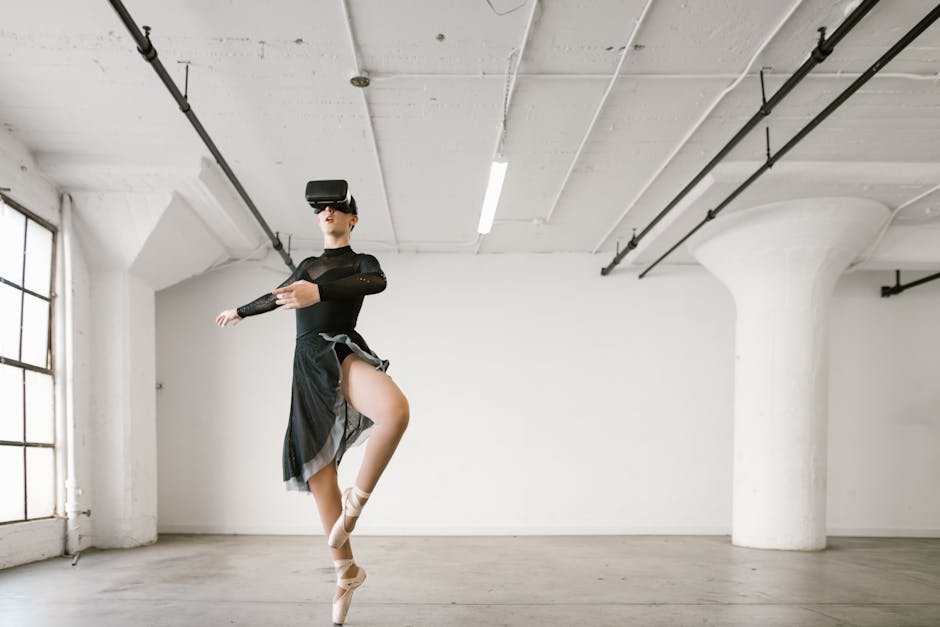Art has always been a reflection of society, and as our world becomes increasingly digital, so too does the art we create and consume. Digital art galleries are popping up everywhere, offering a new way to experience and appreciate art without ever stepping foot in a physical space. This shift is revolutionizing the art world, making it more accessible and inclusive than ever before.
I’ve noticed that technology is not just changing how we view art but also how artists create and share their work. From virtual reality exhibitions to blockchain-authenticated pieces, the possibilities seem endless. Join me as I explore how digital art galleries are transforming the landscape of art and what this means for artists, collectors, and enthusiasts alike.
The Emergence of Digital Art Galleries
Digital art galleries are reshaping how we experience art. Following the rise of virtual platforms, these galleries enable broader access and engagement.
A Historical Perspective
The concept of digital art galleries started gaining traction in the early 2000s. Institutions like the Museum of Modern Art (MoMA) and the Tate Modern began experimenting with online collections. Artists started to create digital-only pieces, leveraging software tools to expand their creative horizons. Over time, advancements like high-resolution imaging and interactive user interfaces made virtual galleries more immersive. This historical development laid the groundwork for today’s sophisticated digital art experiences, bridging the gap between technology and traditional art forms.
Impact of Early Adopters
Early adopters of digital art galleries, such as Google Arts & Culture and Saatchi Art, showcased the potential of this medium. Google Arts & Culture used high-resolution images to democratize access to global art collections, enabling users to explore works from renowned museums virtually. Saatchi Art provided a platform for emerging artists to reach a global audience, utilizing digital tools to connect artists and collectors directly. These pioneers demonstrated the viability and scalability of digital platforms for art, influencing the broader adoption across the industry.
How Technology is Facilitating the Growth of Digital Art
Technology is reshaping the art world by enabling new forms of expression and distribution. Digital art galleries thrive due to advancements like virtual reality (VR), augmented reality (AR), and blockchain technology.
Virtual Reality and Augmented Reality in Art
Virtual reality immerses viewers in a 3D experience, allowing them to explore art in a simulated environment. Using VR headsets, users can step into recreated museum spaces, interact with art installations, and experience exhibitions without physical boundaries. AR, on the other hand, overlays digital information onto the real world. For example, mobile apps can project digital artworks onto physical spaces, enhancing viewer interaction. Institutions like the Louvre and The British Museum use these technologies to offer virtual tours and interactive guides, expanding accessibility.
Blockchain and Art Authenticity
Blockchain technology ensures the authenticity and provenance of digital art. Blockchain’s decentralized ledger records ownership and transaction history transparently. Artists mint digital works as NFTs (non-fungible tokens), embedding metadata that confirms originality and ownership. Platforms like OpenSea and Rarible facilitate NFT trading, giving artists new revenue streams. Collectors and buyers can track the purchase history and verify the legitimacy of digital art pieces, fostering trust within the digital art market.
Changing Patterns of Art Consumption

Digital art galleries have transformed how people experience art, altering consumption patterns in significant ways.
Shifts in Audience Demographics
- Broadened Art Access: Digital platforms have broadened art access, attracting diverse age groups.
- Younger Engagement: Younger generations, particularly those aged 18-34, engage more with digital art galleries (source: Statista).
- Demographic Shift: This shift challenges the traditional older demographic associated with physical gallery visits.
- Global Audience: Online spaces appeal to international viewers, removing geographical barriers and creating a global audience for artists.
From Physical Visits to Virtual Tours
- Redefined Gallery Experiences: Virtual tours have redefined gallery experiences, making art accessible 24/7.
- Realistic Exploration: High-resolution images and 3D navigation mimic real-life visits, allowing users to explore exhibitions from their devices.
- Increased Online Engagement: According to a survey by Hiscox, 79% of art buyers have visited digital galleries, indicating a significant shift toward online engagements.
- Accessibility Benefits: This accessibility benefits those unable to visit physical locations due to distance, disability, or other constraints.
Case Studies of Successful Digital Art Galleries
Digital art galleries have redefined the art world. Here are some successful examples demonstrating their impact.
Online-Only Exhibitions
Online-only exhibitions showcase digital art exclusively through virtual platforms. Platforms like Sedition and Artland exemplify this model. Sedition curates and sells digital art, providing limited edition digital works from renowned artists like Tracey Emin and Yoko Ono. Users can purchase, collect, and display these works on various digital screens.
Artland, on the other hand, focuses on virtual reality (VR) exhibitions, offering immersive 3D experiences of gallery spaces. Collectors and enthusiasts can explore global art galleries with just a click, making high-quality art accessible to a wider audience. Artland’s VR tours feature top galleries like David Zwirner and König Galerie, enhancing user engagement by allowing virtual walkthroughs of physical spaces.
Hybrid Models and Their Success
Hybrid models combine physical and digital elements to offer a seamless art experience. The Metropolitan Museum of Art and Uffizi Gallery have successfully integrated this approach. The Met offers digital catalogues, online collections, and virtual tours while maintaining its physical presence. The Met 360° Project allows users to explore iconic spaces like the Great Hall and Temple of Dendur through high-definition 360° videos.
The Uffizi Gallery has enhanced its reach through the Uffizi Decameron initiative. This project, launched during the COVID-19 pandemic, offers a rich online experience combining digitized artworks, video tours, and interactive content. The initiative attracted millions of virtual visitors, showcasing the power of hybrid models in broadening access to art.
These case studies highlight how digital art galleries, using online-only exhibitions and hybrid models, are transforming how people access, engage with, and appreciate art.
Future Trends in Digital Art Galleries
Digital art galleries are quickly adapting to technological advancements and addressing emerging challenges, maintaining their evolution in the art world.
1. Predicted Technological Advancements
Several technological advancements are expected to shape the future of digital art galleries. Artificial intelligence (AI) will likely enhance personalized art recommendations. AI can analyze user behavior to suggest artworks based on individual preferences, making art exploration more intuitive.
Blockchain technology will become essential for verifying the authenticity and ownership of digital art. This technology provides a tamper-proof ledger, increasing transparency in art transactions and minimizing forgery risks.
Advances in augmented reality (AR) and virtual reality (VR) will create more immersive art experiences. Galleries could offer virtual tours where users explore and interact with art directly from their homes.
2. Potential Challenges and Opportunities
While digital art galleries offer many opportunities, they also come with challenges. One major challenge is ensuring digital security, particularly regarding data privacy and protection against cyberattacks. Implementing robust security measures is crucial for gaining user trust.
The digital divide presents another challenge. Not all potential users have access to high-speed internet or advanced devices necessary for these experiences. Bridging this gap could expand digital art’s reach to underserved populations.
Despite these challenges, there are abundant opportunities. Digital platforms enable galleries to reach a global audience, breaking geographical barriers. They can also host live events and artist interviews, fostering direct engagement with the art community.
The future landscape of digital art galleries will be shaped by technological advancements while navigating inherent challenges, focusing on expanding access and enhancing user experience.
Conclusion
The rise of digital art galleries marks a significant shift in how we experience and engage with art. Technology is not only enhancing accessibility but also transforming the art world through innovations like VR, AR, and blockchain. As we look to the future, the potential for AI, immersive experiences, and global connectivity promises to further revolutionize this space. Challenges like digital security and the digital divide need addressing but the opportunities for broader engagement and direct artist-audience connections are immense. Embracing these advancements will shape a more inclusive and dynamic art landscape.

 Jasmine Wellish is a key contributor at Info Wave Circle, known for her insightful articles and creative approach to technology and societal issues. With a deep passion for innovation and a knack for storytelling, Jasmine plays a crucial role in communicating the vision and achievements of Info Wave Circle to a broader audience.
Since joining the team, Jasmine has been instrumental in crafting compelling content that highlights the transformative potential of technology. Her work not only informs but also inspires the Info Wave Circle community and beyond. Jasmine’s dedication to exploring new ideas and her ability to convey complex concepts in an engaging manner make her an invaluable asset to the organization’s mission of fostering innovation and societal progress.
Jasmine Wellish is a key contributor at Info Wave Circle, known for her insightful articles and creative approach to technology and societal issues. With a deep passion for innovation and a knack for storytelling, Jasmine plays a crucial role in communicating the vision and achievements of Info Wave Circle to a broader audience.
Since joining the team, Jasmine has been instrumental in crafting compelling content that highlights the transformative potential of technology. Her work not only informs but also inspires the Info Wave Circle community and beyond. Jasmine’s dedication to exploring new ideas and her ability to convey complex concepts in an engaging manner make her an invaluable asset to the organization’s mission of fostering innovation and societal progress.
